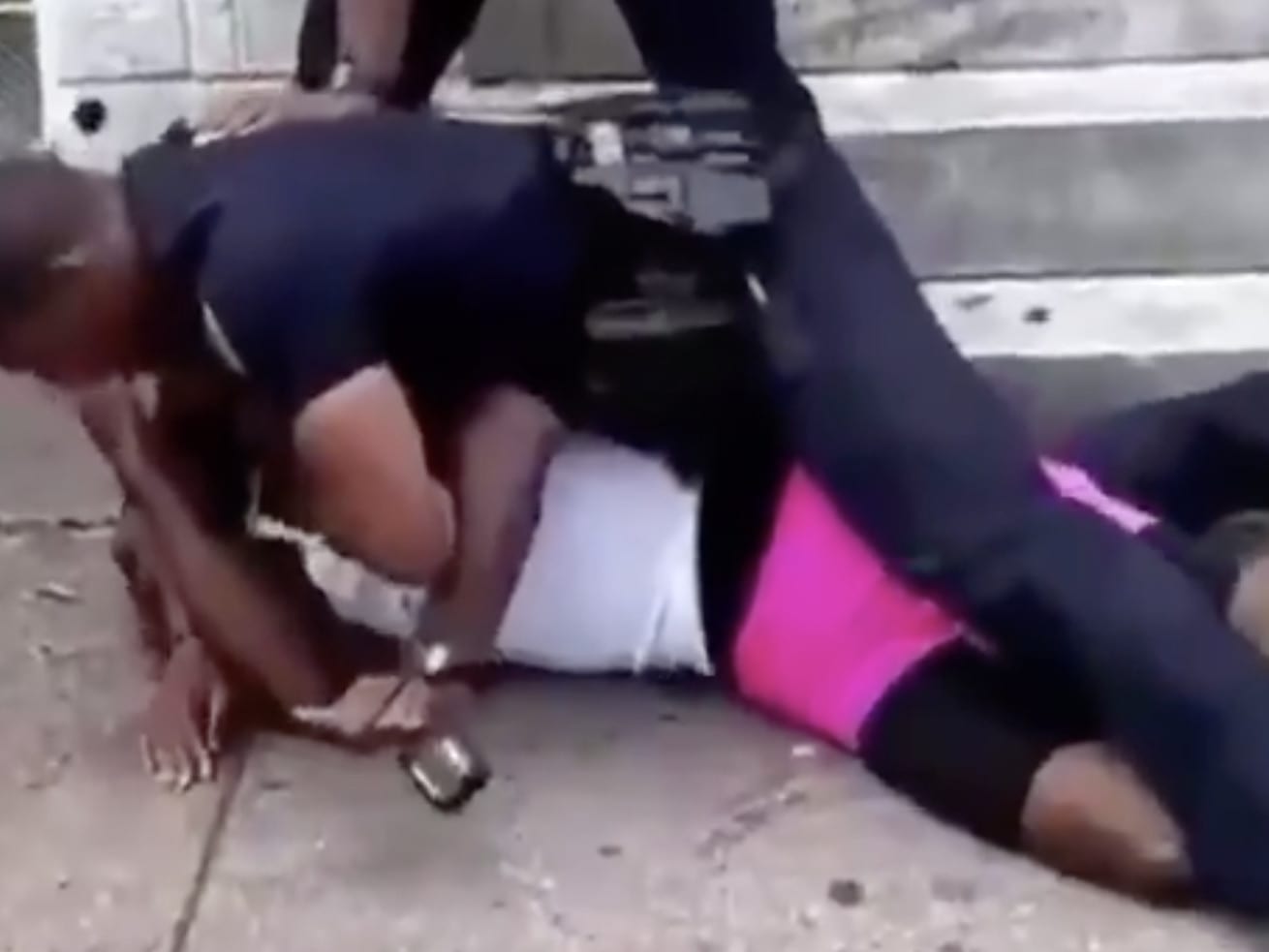The latest viral video of Baltimore police shows that the department’s reform efforts have a long way to go.
A video showing a Baltimore police officer brutally beating a black man quickly made the rounds on the internet over the weekend, prompting the officer to resign and creating a new controversy for a police department long troubled by its treatment of the city’s black residents.
In the video, which was recorded by a bystander and posted to Facebook and Instagram on Saturday, a police officer backs 26-year-old Dashawn McGrier against a wall. McGrier then yells, “Don’t touch me,” at the officer, who proceeds to punch McGrier’s head and face for the next several seconds. The men fall to the ground, where the police officer then pins McGrier’s head, pushing it against the concrete. McGrier can be heard yelling as a pool of blood falls from his mouth. Bystanders can be heard criticizing the police officer’s use of force throughout the video.
According to the Baltimore Police Department, the incident began as two police officers worked a “crime suppression detail” in the area. One of the officers had previously interacted with McGrier during an incident and approached him. The officers then left, but returned to have McGrier sign a “citizen contact sheet,” a form used to document when officers interact with the public. That’s when things quickly escalated.
McGrier was taken to a hospital and treated for his injuries, which include a fractured jaw and damaged ribs. “It seems like this officer had just decided that Dashawn was going to be his punching bag,” attorney Warren Brown told the Baltimore Sun. Brown said that McGrier will file a lawsuit.
Interim Police Commissioner Gary Tuggle said that he was “deeply disturbed” by the incident. “I don’t think that was any room for the activity that I saw in the and it is extremely disturbing,” he told reporters during a press conference on Monday.
Baltimore Mayor Catherine Pugh also called the footage of the assault “disturbing” and said she has demanded accountability from the police department. “We are working day and night to bring about a new era of community-based, Constitutional policing and will not be deterred by this or any other instance that threatens our efforts to reestablish trust of all citizens in the Baltimore Police Department,” Pugh said in a statement on August 11.
A criminal investigation into the issue is ongoing according to the police department and will be conducted by both the police department and the state attorney’s office. A second officer who was present during the assault but did not stop it has been placed on administrative duty.
The violent confrontation has called new attention to the Baltimore Police Department, which has struggled to address matters of police violence and police misconduct amid a rise in homicides in the city. And this latest incident suggests that if the department is serious about regaining community trust, it will need to do much more to rein in its officers.
The Baltimore Police Department has been mired in scandals for years — making its reform efforts much more difficult
National attention to the Baltimore Police Department intensified after the 2015 death of Freddie Gray, who died after being subjected to a “rough ride” in a police van without a seat belt. When protests over Gray’s death broke out into violence, federal agencies quickly intervened.
In 2016, the Department of Justice released a report on the Baltimore Police Department, describing an agency that had long disregarded the rights of city residents, particularly black ones. “Racially disparate impact is present at every stage of [the Baltimore Police Department]’s enforcement actions, from the initial decision to stop individuals on Baltimore streets to searches, arrests, and uses of force,” the report noted. “These racial disparities, along with evidence suggesting intentional discrimination, erode the community trust that is critical to effective policing.”
In 2017, the department entered a consent decree with the federal government requiring the police department to enact a series of sweeping police reforms.
Progress on those reforms has been slow. The department has continued to encounter a series of scandals, from police officers planting evidence to a gun task force that conducted false searches and actively plundered city residents. And a lack of trust in the police has likely influenced a spike in the city’s homicide rate, which has surged in the three years since Gray’s death.
Add to that a revolving door of police commissioners — Baltimore has seen three in the past three years and is currently searching for a fourth — and you have an increasingly volatile mix for city residents who have long viewed their police force with suspicion and disdain.
“I don’t think there is a more challenging police chief job in the country right now,” Chuck Wexler, the executive director of the nonprofit Police Executive Research Forum, told the Baltimore Sun this month.
This problem also plagues cities like Chicago, which has struggled to rebuild trust in black communities following historical — and more recent — incidents of biased policing. And it is an issue that only becomes more fraught when police officers behave inappropriately.
Author: P.R. Lockhart



